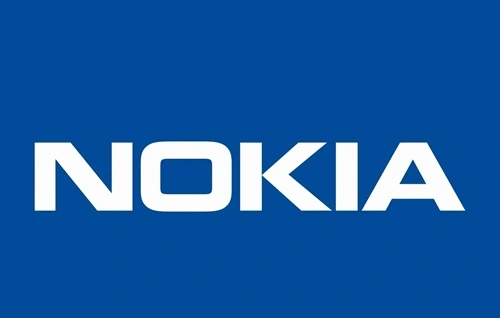Nokia, a Finnish telecommunications and consumer electronics company, is renowned for its historic dominance in the mobile phone market and its current focus on network infrastructure and telecommunications technology. From being the world’s top mobile phone manufacturer in the early 2000s, Nokia has shifted its business model to focus on network infrastructure, 5G technology, and digital transformation solutions. In today’s highly competitive telecom industry, Nokia faces both opportunities and challenges, as it strives to establish a stronghold in the 5G and network services market. This SWOT (Strengths, Weaknesses, Opportunities, Threats) analysis explores Nokia’s current position and future outlook in an industry shaped by rapid technological advancements and fierce competition.

Strengths
1. Strong Brand Recognition and Legacy in Telecommunications:
Nokia has established itself as a trusted name in telecommunications, with a legacy spanning several decades. Its brand is associated with reliability, quality, and innovation, which has helped Nokia build strong partnerships with telecom operators, governments, and enterprises worldwide. This brand recognition provides Nokia with a competitive advantage, making it a preferred choice for telecom infrastructure solutions.
2. Extensive Product Portfolio and Focus on 5G Technology:
Nokia has diversified its offerings beyond mobile phones, focusing on network infrastructure, 5G, cloud solutions, and Internet of Things (IoT) technologies. Its extensive product portfolio includes radio access networks (RAN), software, cloud services, and cybersecurity solutions, positioning Nokia as a one-stop solution provider for telecom operators transitioning to 5G. Nokia’s focus on 5G technology has enabled it to capture demand from telecom operators upgrading their networks to meet growing data requirements.
3. Strong Research and Development (R&D) Capabilities:
Nokia invests heavily in research and development, with approximately 20% of its revenue allocated to R&D each year. The company’s commitment to innovation has led to advancements in 5G technology, network virtualization, and next-generation connectivity solutions. Its R&D initiatives have helped Nokia secure multiple 5G patents, giving it a competitive edge in the global 5G race and reinforcing its position as a technology leader.
4. Strategic Partnerships and Alliances:
Nokia has formed key partnerships with telecom operators, tech companies, and government entities across the globe. Collaborations with major players like Microsoft, Google Cloud, and AT&T have strengthened its network infrastructure capabilities, allowing Nokia to leverage its partners’ expertise to offer end-to-end digital solutions. Strategic partnerships enable Nokia to diversify its service offerings, enter new markets, and stay relevant in the face of technological disruption.
Weaknesses
1. Decline in Mobile Phone Market and Missed Smartphone Opportunity:
Nokia’s once-dominant position in the mobile phone market diminished due to strategic missteps, including its late entry into the smartphone market and the adoption of the Windows Phone operating system over Android. These decisions led to a loss of market share to rivals like Apple and Samsung. While Nokia’s mobile brand has since been revived under HMD Global, it remains a small player in the smartphone segment, limiting Nokia’s revenue streams from consumer electronics.
2. Dependency on Telecom Network Infrastructure:
Nokia’s current business model relies heavily on telecom network infrastructure, particularly 5G. While 5G presents growth potential, Nokia’s reliance on a single revenue stream makes it vulnerable to fluctuations in telecom spending, regulatory changes, and industry competition. This dependency on network infrastructure limits Nokia’s ability to diversify its revenue sources, exposing it to risks associated with the cyclicality of the telecom sector.
3. High Operating Costs and Profitability Challenges:
The telecom equipment industry is capital-intensive, requiring substantial investments in R&D, infrastructure, and skilled talent. Nokia’s high operating costs, driven by R&D expenditures and its global operations, have impacted its profitability. While Nokia’s revenue has shown growth, maintaining a strong bottom line remains a challenge, particularly as the company faces pricing pressure from competitors such as Ericsson and Huawei.
4. Limited Presence in Software and Digital Services:
Although Nokia has made strides in network infrastructure, its presence in software, cloud services, and digital transformation solutions is limited compared to tech giants like Cisco and Huawei. While Nokia has expanded into these areas, it still lags behind in market share, particularly in high-margin software-driven solutions. Strengthening its position in software and digital services would provide Nokia with additional growth avenues and improve profitability.
Opportunities
1. Expansion in 5G and Next-Generation Networks:
The global rollout of 5G presents significant growth opportunities for Nokia, as telecom operators worldwide upgrade their networks to meet rising data demands. Nokia’s strong 5G product portfolio positions it well to capture demand from telecom operators and enterprises deploying 5G infrastructure. Furthermore, as governments across the globe push for 5G adoption to enhance digital connectivity, Nokia stands to benefit from an expanding market for 5G solutions.
2. Growth in IoT and Industrial Applications:
The rise of IoT and Industry 4.0 has created a growing demand for connectivity solutions tailored for industrial applications, such as smart factories, logistics, and remote monitoring. Nokia’s private wireless networks and IoT solutions enable enterprises to leverage connected devices, improve operational efficiency, and reduce costs. Expanding its presence in the IoT market provides Nokia with an opportunity to serve a broader customer base across sectors like manufacturing, healthcare, and transportation.
3. Potential in Cloud and Edge Computing:
The shift towards cloud and edge computing represents a valuable growth avenue for Nokia. As businesses adopt edge computing for faster data processing and reduced latency, Nokia’s expertise in network infrastructure positions it to provide edge solutions to enterprises and telecom operators. Collaborations with cloud providers, such as Microsoft Azure and Google Cloud, can help Nokia develop cloud-native solutions that cater to businesses embracing hybrid and multi-cloud strategies.
4. Government Support and Demand for Secure Network Solutions:
As countries prioritize digital transformation and data security, there is growing demand for secure network infrastructure from trusted suppliers. Nokia, being a non-Chinese supplier, benefits from increased trust in markets concerned about security and data privacy, especially as countries restrict the use of Chinese technology in critical infrastructure. This shift creates opportunities for Nokia to expand its presence in regions prioritizing secure 5G deployment, such as Europe, North America, and India.
Threats
1. Intense Competition from Rivals like Ericsson and Huawei:
The telecom equipment market is highly competitive, with established players like Ericsson, Huawei, ZTE, and Cisco vying for market share. Huawei, despite facing restrictions in several markets, remains a formidable competitor, especially in Asia and Africa. This intense competition requires Nokia to continuously innovate, invest in R&D, and offer competitive pricing, which can put pressure on its margins and impact profitability.
2. Regulatory and Geopolitical Risks:
As a global telecom equipment provider, Nokia is exposed to regulatory and geopolitical risks in different markets. Trade restrictions, import-export regulations, and political tensions, particularly involving the U.S., China, and Europe, can disrupt Nokia’s operations. For example, trade restrictions on Huawei have impacted the telecom supply chain and heightened regulatory scrutiny in the industry. Any escalation of geopolitical conflicts or trade restrictions could hinder Nokia’s ability to operate smoothly across regions.
3. Rapid Technological Changes and Short Product Lifecycles:
The telecom and technology industries are characterized by rapid technological advancements and short product lifecycles. Nokia must continuously innovate to keep up with emerging technologies, such as 6G, advanced IoT, and AI-driven networks. Failing to keep pace with these changes could result in Nokia losing market relevance and competitive advantage. The need to innovate also increases R&D expenses, impacting Nokia’s financial health.
4. Impact of Economic Slowdowns on Telecom Spending:
Telecom infrastructure spending is influenced by economic cycles and government budgets. During economic downturns, telecom operators may delay or reduce investments in network upgrades and new deployments, impacting demand for Nokia’s products and services. The COVID-19 pandemic demonstrated the impact of economic uncertainty on capital expenditures in the telecom sector. A prolonged economic slowdown could reduce telecom spending and impact Nokia’s revenue growth.
Future Outlook
Nokia’s future outlook is optimistic, driven by growth opportunities in 5G, IoT, and digital transformation. As 5G deployment accelerates globally, Nokia is well-positioned to capitalize on demand for network infrastructure, private wireless networks, and advanced connectivity solutions. The company’s focus on 5G technology, combined with its partnerships with global telecom operators and cloud providers, provides a solid foundation for growth in the telecom infrastructure space.
The growing adoption of IoT and the demand for industrial applications represent additional growth avenues. Nokia’s private wireless networks and IoT solutions align well with Industry 4.0 trends, enabling it to serve enterprise customers in manufacturing, healthcare, logistics, and smart cities. Expanding its IoT capabilities and introducing customized solutions for industrial applications can help Nokia capture demand in these emerging sectors.
However, to sustain growth and profitability, Nokia must address challenges related to high operating costs, dependency on telecom infrastructure, and competition from global players. Expanding its software and digital services offerings could improve profit margins and diversify revenue streams, making Nokia less vulnerable to fluctuations in telecom spending. Strengthening its presence in high-margin segments, such as cloud services, network security, and edge computing, will be crucial for Nokia to remain competitive.
Investing in digital transformation and enhancing its operational efficiency will also help Nokia manage its cost structure and improve profitability. By adopting data analytics, AI, and machine learning, Nokia can optimize its operations, streamline its supply chain, and better serve customers.
In conclusion, Nokia’s strengths in brand equity, 5G expertise, and strategic partnerships provide a strong foundation for growth in a rapidly evolving telecom industry. By leveraging opportunities in 5G, IoT, and cloud computing, Nokia can expand its market presence and secure its position as a leading telecom solutions provider. With a balanced approach to innovation, diversification, and digitalization, Nokia is well-prepared to navigate industry challenges and capitalize on growth opportunities in the global telecommunications landscape.

